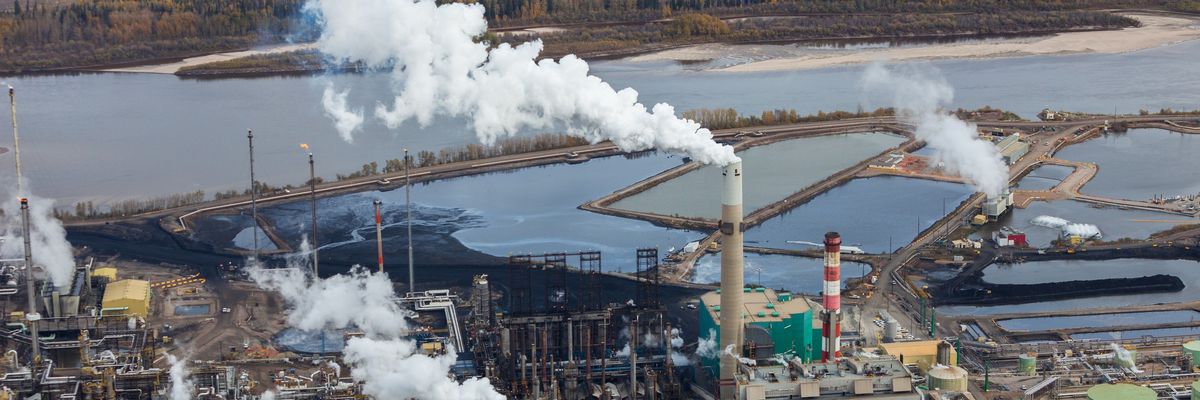Aircraft measurements of pollutants over the Athabasca tar sands in Alberta, Canada show levels exceeding industry reports by 1,900% to more than 6,300%, scientists revealed Thursday, underscoring the need for humanity to rapidly phase out fossil fuels.
While the Canadian government requires air quality monitoring around oil sands operations, industry figures focus on certain compounds. For this research, published Thursday in the journal Science, experts from Yale University and Environment and Climate Change Canada, a department of the Canadian government, accounted for a wider range of emissions.
After collecting data from 30 flights around 17 tar sands operations in 2018, "what we saw were very large emissions of total gas-phase organic carbon from these facilities," said co-author and Yale professor Drew Gentner in a statement. "On average, the majority of the total gas-phase organic carbon was from often overlooked compounds, which are typically outside of the scope of routine monitoring."
"This report backs up what the communities living in these areas experience—it is so bad they cannot open their windows because it hurts their lungs to breathe—especially at night."
Co-author John Liggio of Environment and Climate Change Canada noted that "the magnitude of the observed emissions from oil sands operations was larger than expected, considering that it was roughly equivalent to the sum of all other anthropogenic sources across Canada when including all the motor vehicles, all the solvents, all the other oil and gas sources, and everything else reported to the inventory."
Nadine Borduas-Dedekind, a University of British Columbia atmospheric chemist who has worked with Liggio but was not involved with this study, toldNature that "I'm concerned by how big this number is."
"You want to be measuring all this carbon. For air quality, for health, but also for climate," she said, explaining that some of the molecules are oxidized to planet-heating carbon dioxide.
Thanks to the tar sands deposits across northern Alberta, which are estimated to contain 1.7-2.5 trillion barrels of oil, Canada trails only Saudi Arabia and Venezuela in terms of total known reserves.
As Inside Climate Newsdetailed Thursday:
The deposits do not technically hold crude oil, but instead a heavier hydrocarbon called bitumen, which must be heated and treated in order to form a liquid that can be piped and refined like oil. That process requires sprawling industrial operations of open pit mines, ever-growing waste ponds, and refinery-like "upgraders." The waste ponds have leached toxic chemicals into groundwater, and a heavy, sulfurous stench often settles over the region. The mines have stripped away an area larger than New York City, lands that had long been occupied by people from several Indigenous First Nations. One of those First Nations, Fort McKay, is now surrounded by mines.
Jean L'Hommecourt, an enrolled member of the Fort McKay First Nation, told Inside Climate News she wasn't shocked by the new findings.
"I was just like, eh, I knew all along," said L'Hommecourt, who has worked to clean up nearby operations. "We feel the physical effects here."
Jesse Cardinal of the Indigenous-led group Keepers of the Water similarly said to The Guardian, "We are told this is all within the limits and OK but this report backs up what the communities living in these areas experience—it is so bad they cannot open their windows because it hurts their lungs to breathe—especially at night."
Asked to comment on the research, Keith Stewart, a senior energy strategist for Greenpeace Canada, wrote in an email to The Independent, "I suppose 'Holy s***' isn't printable."
"In quantifying the astonishing and largely unreported levels of health-damaging air pollution coming out of oil sands operations, these scientists have validated what downwind Indigenous communities have been saying for decades," Stewart added. "This is making people sick, so our governments can and should require these companies to use some of their record-breaking profits to clean up the mess they've made."
